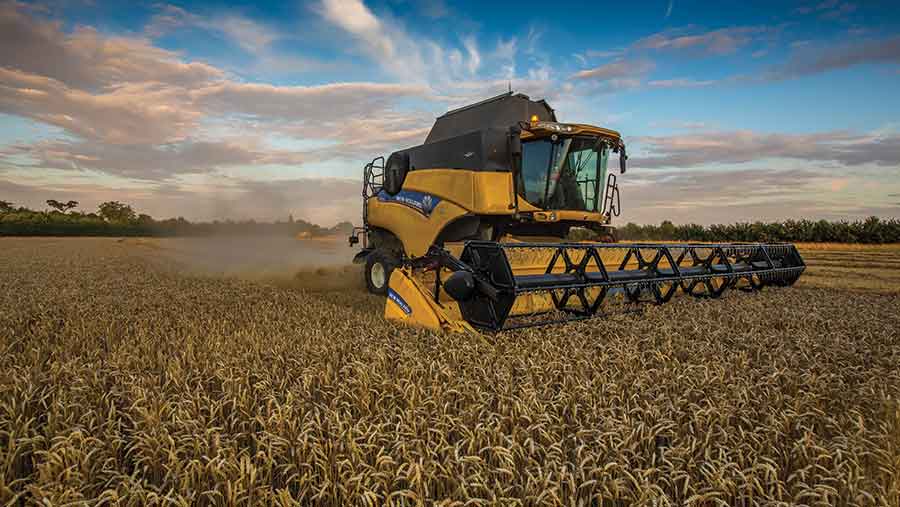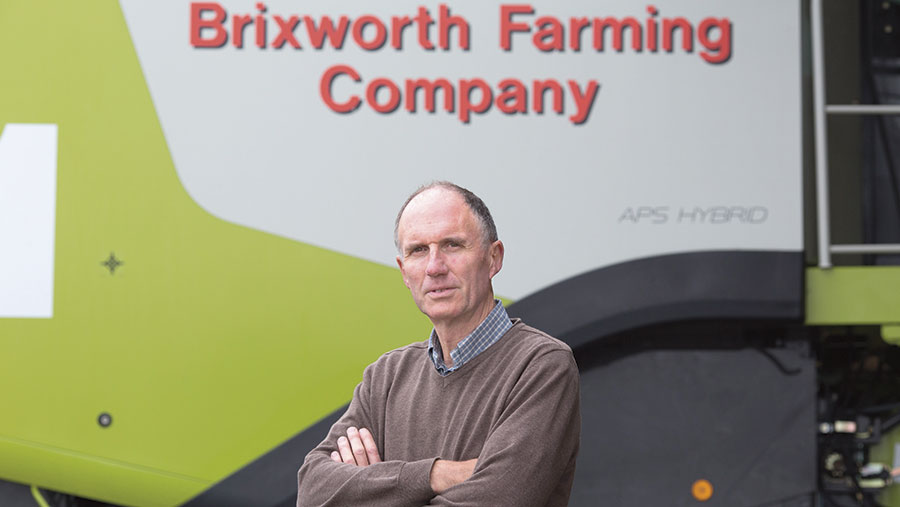Group 2 wheats deliver quality and a premium
 © Tim Scrivener
© Tim Scrivener This season saw Group 2 wheat make a return after a five-year absence at Brixworth Farming, attracted by newer high-yielding varieties with good agronomy traits and, most importantly, a premium.
Charles Matts’ policy on variety selection is that all wheat must potentially earn a premium at the 2,000ha joint-venture farm business in Northamptonshire.
See also: Swing to bread wheats seen as variety choice widens
Therefore, the starting point is the market and to help identify opportunities for securing premiums, he has developed a unique relationship with local merchant Charles Jackson.
“He helps identify where there is potential to add value and he has an input on variety choice,” explains Charles Matts.
“Last year, Charles [Jackson] suggested we consider growing Lili, as he had a market for it in the snack foods and breakfast cereal sectors.”
Mr Jackson adds that there is a lot less Group 2s being grown now.
This is underlined by the 2015 AHDB Planting and Variety survey, where the Group 2 area fell by 408,000ha in the 10 years to 2015, at 97,000ha.
So Charles Matts established 200ha of Lili last autumn, adding to his mix of premium-earning wheats. Group 2s haven’t featured for five years at Brixworth, the last being milling stalwart Cordiale.
Agronomy
“What helped persuade me is that it is a cheaper crop to grow than the Kielder it replaced, having better disease resistance,” says Mr Matts.
His son Ian, who does the agronomy for Brixworth, explains that in the past two years, they have been looking at better agronomics.
They previously grew Oakley, Torch and Kielder, which are more susceptible to yellow rust, but this was not a problem with a robust fungicide programme. “But the proportion was creeping up, putting pressure on fungicide timings.
“It made sense to go for a variety with better resistance. So two years ago, we opted for Revelation and found we could cut back on inputs.” It earned a premium as it is a soft Group 4 variety.
The combined value of lower growing costs and a premium was evident in 2014, when Revelation outperformed Kielder financially, despite yielding 9.8t/ha compared with Kielder’s 11.3t/ha.
Then last autumn, Lili came into the mix, offering a 9 rating for mildew and 7 for yellow rust.
Risk management
Lili’s high yield and good agronomics also mean it fits in better with risk management, says Mr Matts. “High yields help if you don’t get the premium and it is only 1% behind Reflection on the AHDB Recommended List.”
He recalls the cost of the wet season of 2012 when Hagbergs were an issue and he secured no premium for the Group 1 milling wheats.
Another part of Brixworth’s risk management is to grow at least three varieties in the mix. This season, in addition to Lili and Revelation, Group 1 Skyfall is being grown.
Last year, Skyfall averaged more than 12t/ha and half of the crop made the top specification, earning a £24/t premium. Mulika spring wheat is also grown in fields with severe blackgrass, as it allows more time for stale seed-beds. Again, being a Group 1, it earns a milling premium.

Charles Matts © Tim Scrivener
Having a mix also helps with combine capacity, as you need to get the crops harvested before hagbergs fall, says Mr Matts.
“There always seems to be some rain delay in a harvest and the concern is losing premium.”
With Group 2s, there is a sliding scale of contracts. Growers can either invest in extra fertiliser and go for the full milling spec, with 13% protein and a £2/t discount to a Group 1. Alternatively they could opt for a low-grade milling market at about 11.3% protein and secure a £7/t premium. This is the approach being taken by Brixworth.
Then there is the 10.4% protein option, which still secures a £5/t premium for the snack food and breakfast cereal markets.
Therefore, Mr Jackson questions why growers focus so much on growing hard Group 4s, when a Group 2 practically offers the same yield, but with better milling qualities.
While Mr Jackson is not exporting Group 2 wheat himself, he highlights there is overseas demand that helps in time of surplus.

